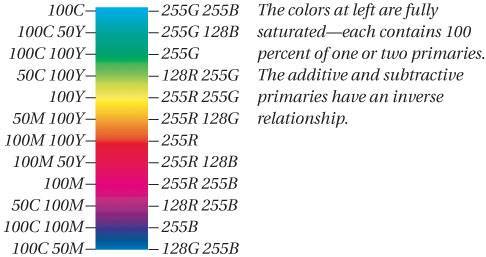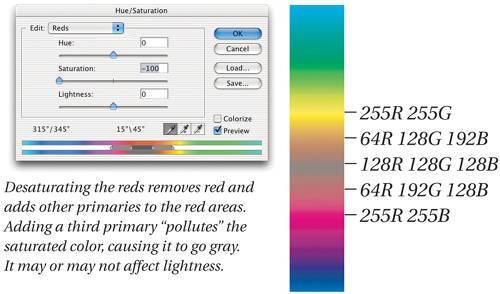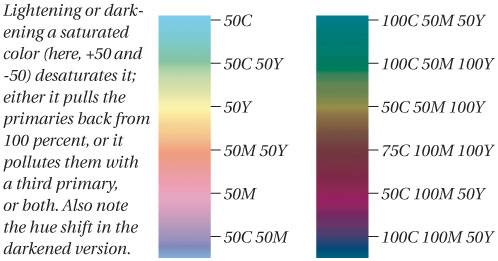Device-Independent Color
| Basically, the problem with HSB, RGB, and CMY (and even CMYK) is that they don't describe how a color looks; they only describe the color's ingredients. You've probably walked into a television store and seen about a hundred televisions on the wall, each of them receiving the same color information. But none of them displays the colors in the same way.
In fact, if you send the same RGB values to ten different monitors, or the same CMYK values to ten different presses, you'll end up with ten different colors (see Figure 4-4). We call RGB and CMYK device dependent, because the color you get varies from device to device. Figure 4-4. Device-dependent color and color gamuts So, Photoshop has a problem in trying to display colors properly on your monitor: It doesn't know what the colors should look like to you. It doesn't know what those RGB or CMYK values really mean. Plus, the program has to take all the little quirks of human vision into account. For instance, our eyes are more sensitive to some colors and brightness levels than to others, and we're more sensitive to small changes in bright colors than we are to small changes in dark ones (if you've had trouble teasing all the subtle shadow details out of your scanned images, this is one reason why). RGB and CMYK don't give Photoshop the information it needs to know what color is actually being described. Lab ColorFortunately, there's CIE Lab, which appears on the Mode menu simply as Lab. Lab is designed to describe what colors look like, regardless of the device they're displayed on, so we call it device independent. Whereas in HSB the hues are represented as lying around a wheel, Lab color uses a more accurate but significantly less intuitive arrangement. In Lab, the third axis (which lies perpendicular to the page and is roughly equivalent to brightness in HSB) is the luminance axisit represents how bright the color appears to the human eye. But unlike brightness in HSB, it takes into account the fact that we see green as brighter than blue. Whole books have been written on Lab color (we've even read some of them), and while they may be of great interest to color scientists, they're unlikely to help you get great-looking images on a deadline. For now, there are really only three things you need to know about Lab color.
|
EAN: N/A
Pages: 220


